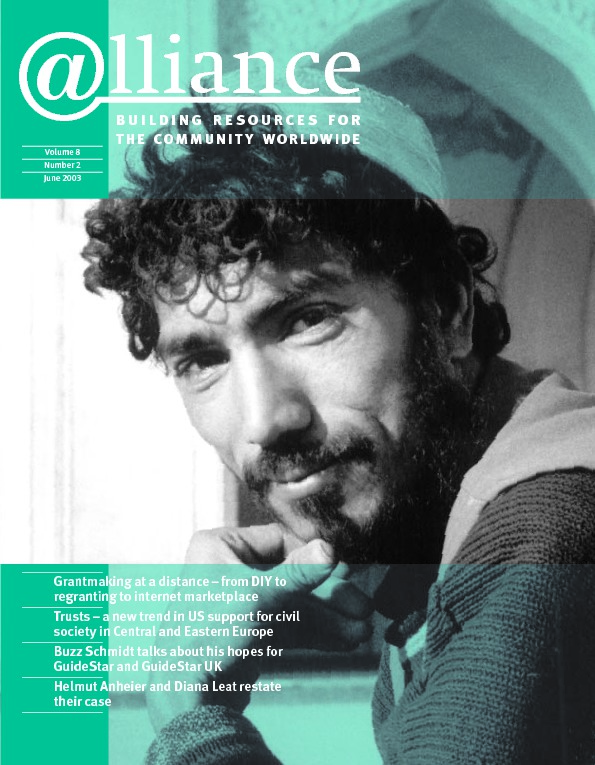Channelling funds from richer to poorer countries effectively is the key objective of all organizations involved in overseas grantmaking and the paramount concern among donors. Various innovative models have been implemented in response to this ever-present need, adopting differing mechanisms to reduce transaction costs, minimize risk and maximize impact. The American India Foundation, founded in the wake of the Gujarat earthquake, is one of these.
In January 2001, news of the devastating earthquake in Gujarat, India prompted Bill Clinton to ask India’s Prime Minister what assistance he could offer. Mr Vajpayee suggested he should try to mobilize a response from wealthy Americans with an Indian heritage. Bill Clinton’s subsequent discussions with prominent members of the Indian diaspora in the US marked the beginnings of the American India Foundation (AIF), which raised $4.7 million for its Gujarat Rehabilitation Program in 2001-02 alone.
What started as an immediate response by a dedicated few to a terrible tragedy in India has since been transformed into a substantial and professional organization that is committed to socio-economic development in India. Its continued rehabilitation work in Gujarat apart, it focuses its grantmaking activities on education (primary education and universal literacy issues) and livelihood (with a special emphasis on women’s empowerment) – sectors where AIF believes the benefits will be most far-reaching and create a lasting impact on broader development issues.
Transforming diaspora giving
Historically, giving to India among the Indian diaspora has been very informal and fragmented, driven by religion, family needs or smaller community efforts. AIF has perhaps for the first time created formal channels to mobilize funds from people across the US who are interested in positive socio-economic change in India, not necessarily limited to the Indian diaspora.
But AIF’s goal is broader than accelerating socio-economic change in India. Part of its vision is to connect communities, building a bridge between the dreams and aspirations of individuals who care about India and their realization. The AIF Service Corps and the Digital Equalizer Programs exemplify this commitment. The Digital Equalizer Program establishes computer and internet learning centres in underprivileged schools in India. Essentially, it seeks to address the issue of digital divide within Indian society. This resonates particularly well with successful Indo-American in the high-tech sector in the US.
Under the Service Corps Program, AIF sponsors qualified volunteers from the US to work with outstanding NGOs in India on related projects for a period of nine months. The programme is designed to promote an exchange of technical skills, manpower, culture and goodwill between the US and India. Whether guided by ancestral links, cultural similarities or even plain emotion, the connection between AIF’s investors and beneficiaries, unlike traditional development agencies, affords the Foundation a unique level of trust.
Decision-making within AIF
What is perhaps most unique about AIF is the collaborative relationship between the foundation’s operations in the US and India. In June 2002 AIF established a permanent office in India and an India Advisory Board to support its grantmaking there. This means that project identification is not left solely to advisory panels based in the US. The Indian office consists of a team of development experts with hands-on experience in the field. Their input is absolutely essential in identifying and vetting viable projects that will generate maximum results per dollar spent. Referrals supplied by the India Advisory Board also contributed to AIF’s ability to identify suitable projects in Gujarat in the early stages.
Nor is decision-making decentralized completely. Given that the bulk of AIF funding so far has come from its high-net-worth donors, the level of interest in its activities among investors is high. Inevitably, they exercise a degree of influence over the directions taken by the organization; some are on AIF’s board. Efforts are, however, being undertaken to broaden the investor base, with many of the trustees themselves conceiving of their role as ‘seed investors’.
Having this sort of shared decision-making process between the US and India operations has proved enormously beneficial. Working together as a collaborative partnership has been key in achieving maximum effectiveness. The model is still evolving, but it has enabled AIF to make a highly promising start.
Pradeep Kashyap is Executive Director of AIF. He can be contacted at Pradeep.Kashyap@aifoundation.org
Shveta Kakar is a volunteer with AIF. She can be contacted at Shveta_Kakar@hotmail.com
For more information
See http://www.aifoundation.org





Comments (0)